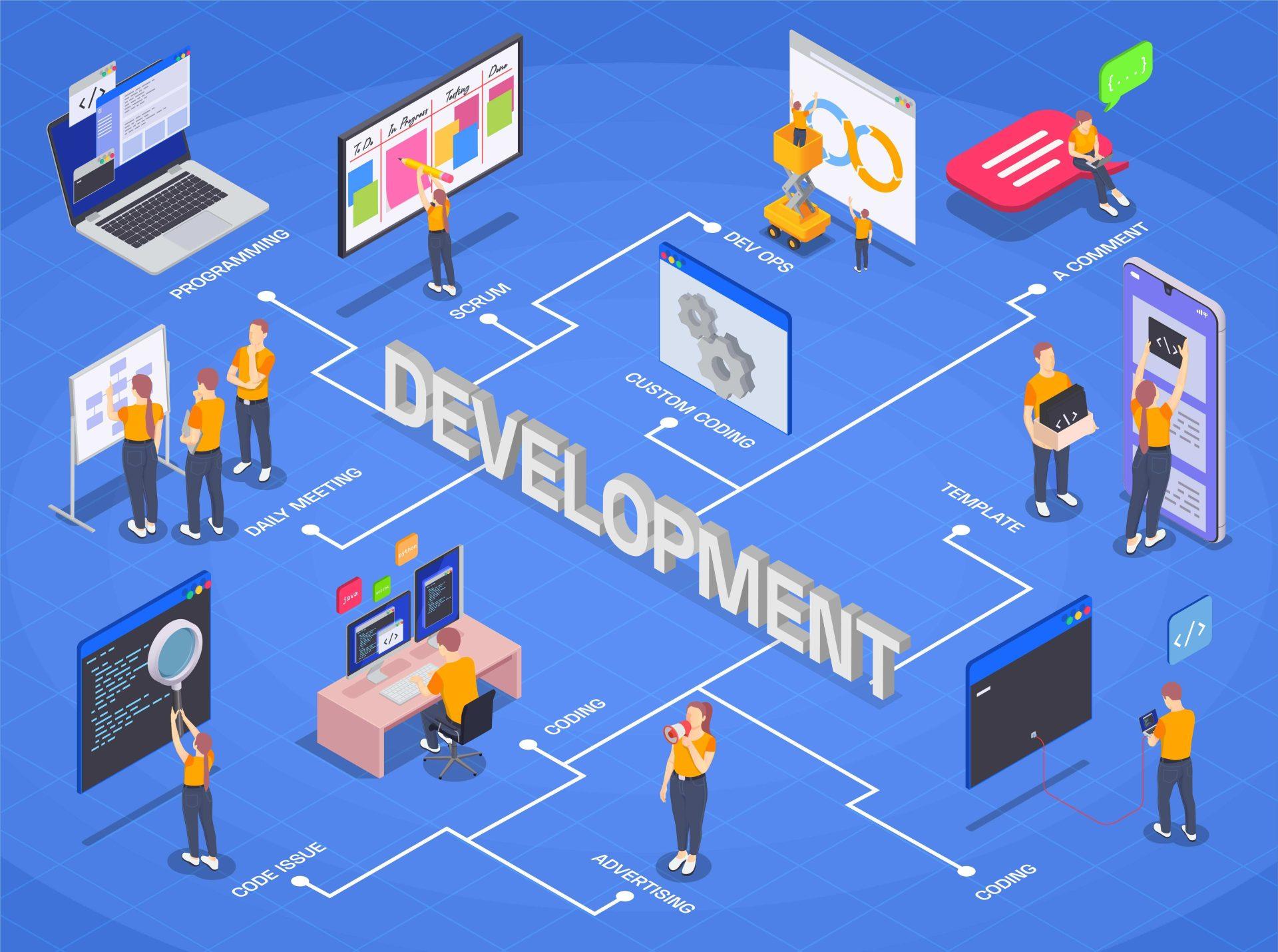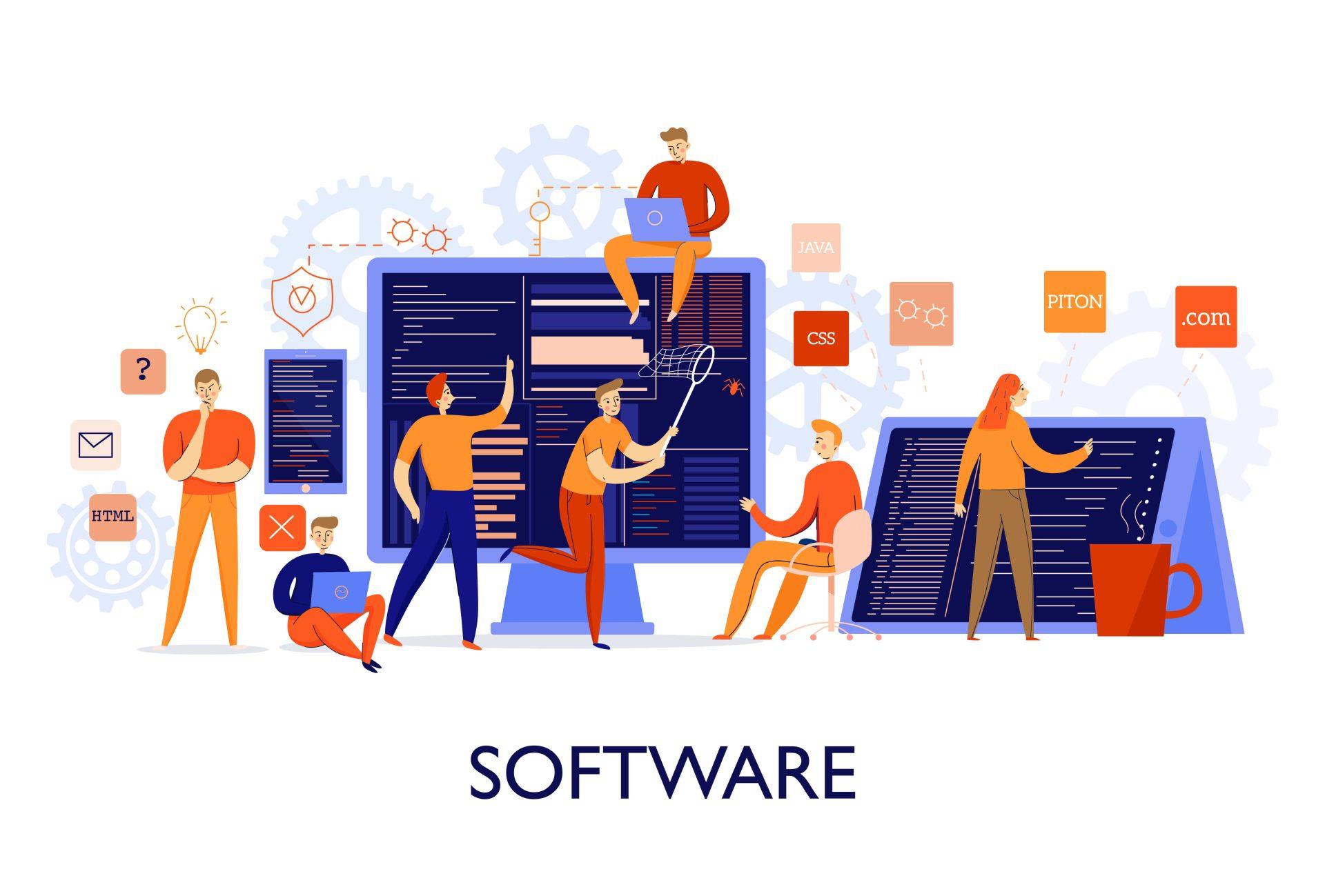
Top 6 Custom Software Development Methodologies for Businesses
Custom software development is an essential component of modern business operations, allowing organizations to streamline processes, improve efficiency, and stay ahead of the competition. With so many different methodologies available, it can be challenging to determine which approach is best for your business. In this blog, we will explore some of the top custom software development methodologies, including Agile, Waterfall, DevOps, V-Model, DSDM, and Prototype.
We will provide a comprehensive overview of each methodology, including its strengths, weaknesses, and suitability for different types of projects. Whether you are a seasoned expert or just starting to learn about custom software development, this blog is designed to provide valuable insights and information that will help you make informed decisions about which methodology is right for your business.
Using the right software development methodology can make all the difference to your business. Whether you need custom software for your online stores, business analytics systems, or mobile apps, our custom software development company can meet your needs.
Consider these top custom software development methodologies for businesses for your next project. These methods can help you streamline your process and deliver the best results.

1. Waterfall
Waterfall is one of the most widely used and respected software development methods in the industry. It works well for teams that are responsible for creating a clear, predictable product with a fixed budget and a few specific requirements that don’t change over time.
The waterfall approach breaks the SDLC (Software Development Life Cycle) down into distinct phases, including requirements gathering, analysis and design, coding and unit testing, system, and user acceptance testing, deployment, and support. Each step requires completion before the next can begin.
Another major benefit of the waterfall methodology is that it ensures that all the information is documented at each stage in the process. This allows future teams to review project progress and keep track of key changes easily.
However, the waterfall approach can be risky if the project is a long-term undertaking or requires frequent change. It can be hard to make large changes during the process if the team is working on a strict schedule, which can cause delays and cost extra money.
Fortunately, there are other custom software development methodologies that address many of the issues that Waterfall poses. Agile is an example of an approach that addresses some of the shortcomings of the Waterfall. It offers a number of advantages over the waterfall model, including flexibility and continuous feedback. This means that you can adjust projects based on feedback from users. It also lets teams focus on improving the quality of the product and eliminating any problems that occur during development.
Trust Synergance to bring your vision to life. Waterfall methodology may be the best fit for your business. Contact us to learn more about how we can help.
2. Agile
Agile is a custom software development method that allows clients to get the products they want quickly. This model also ensures client satisfaction by working with them throughout the project.
This methodology involves developing and testing the software in iterations that are split into 2-4 week periods. This allows for frequent feedback and changes to be made as they occur.
During the iterations, teams can release new versions of the product and test them with real users. This helps find and fix any bugs that may arise during the development process.
The team members use iteration boards and report to track progress. They can then reflect on the experience and make changes to improve their processes in the future.
Many teams also meet regularly to discuss how they can better serve their customers and the business. These retrospective meetings are a great way for teams to share insights and learn from each other’s strengths and weaknesses.
In addition, agile is designed to keep communication between team members at a high level. This is an essential part of the process, as team members need to be able to communicate with each other effectively in order to deliver quality results on time.
The key to using agile is being able to adapt and change as the project moves forward. This is why many teams use iteration boards and reports to track their progress. They also rely on daily sprint meetings to provide ongoing visibility into how their project is progressing.
Ready to implement Agile methodology for your custom software development project? Let Synergance help you achieve your goals. Contact us today to schedule a consultation.
3. DevOps
DevOps is a system that hundreds of tech titans and big retail companies like Etsy, Netflix, and Amazon have adopted. It establishes good collaboration between cross-functional teams, such as development and operations, which simplifies processes.
As a result, it’s not just an IT practice anymore; you can use it in any field or industry. It can be a game changer for businesses, particularly if they need to deliver software quickly without compromising quality.
There are several different ways to adopt the DevOps methodology, but most of them require a significant cultural shift. The first step is to educate your resources and get them on board with the change. You can do this by holding a conference, discussing pain areas, and showing them how DevOps can help your business.
Another important way to implement DevOps is to eliminate the separation between development and operations. By rolling operational functions into engineering roles, companies can improve the efficiency of product development and reduce the risks in outsourcing software development by working closely together.
The next step is to automate as much of the development process as possible. This includes creating systems, OS configs, and app deployments as code.
A great example of this is infrastructure as code, which uses configuration files to create system environments for developers. This saves developers time and allows them to focus on the task at hand. It also helps ensure consistency in systems across multiple platforms.
Embrace the power of DevOps for efficient and effective custom software development. Synergance has the expertise to make it happen. Get in touch now.
4. V-Model
V-Model SDLC is a method of creating new products to meet your organization’s unique needs. In today’s competitive market, it is important for businesses to adopt a bespoke software development process that will help them stand out from their competitors.
V-shaped custom software development methodology is a framework that defines all major stages of the development process and provides a plan to each team member. It helps teams avoid scenarios in which they work on the same tasks or perform low-value ones.
Typically, companies define custom SDLCs with five to seven phases, but more complex projects may reach ten or more. Each stage focuses on a specific goal and is implemented in a sequential, top-down manner.
The first stage of a V-shaped SDLC is the requirements analysis, where the project manager interacts with a client to gain a precise understanding of their needs and expectations. This helps the project manager formulate a clear working plan to divide tasks properly between the developers.
Each phase is followed by a testing phase, which ensures that the product meets all requirements. During this phase, developers test the product’s functionality in a variety of scenarios.
After each verification and validation cycle, the project manager deploys a new version of the software that has undergone rigorous testing. The product is made available to users or stakeholders for further feedback during this step. Ideally, the deployment process is automated as part of a continuous integration/continuous delivery (CI/CD) pipeline.
The V-Model methodology may be the solution you need for your custom software development project. Contact us to find out more. Let Synergance guide you through the process.
5. DSDM
DSDM is a custom software development method that combines rapid application development (RAD) and agile development principles. It’s vendor-independent, covers the entire project lifecycle, and provides best practice guidance for on-time, in-budget delivery of projects.
Unlike other methods, DSDM focuses on building and developing incrementally from firm foundations. Rather than doing too much design work up front, teams only make what is essential for the business and respond to what details emerge as the project or product develops.
This helps avoid unnecessary costs, rework, and delays. It also enables developers to respond quickly to changes in requirements, which can be critical in fast-paced industries such as financial services and pharmaceuticals.
Another key DSDM principle is prioritization, which encourages teams to focus on the highest-value work and not on low-value ‘polishing,’ which can compromise deadlines or deliver no value at all. The “Must, Should, Could and Won’t” technique (MoSCoW) is used to identify which business requirements are crucial, while timeboxing helps to separate each deliverable into manageable chunks and creates deadlines.
DSDM also requires basic foundations to be agreed upon at an early stage, which helps businesses understand the scope and fundamental characteristics of the proposed solution and how it will be created before the development process begins. This paves the way for more effective, efficient, and collaborative project management. In addition, DSDM employs visionary, ambassador, and business advisor roles to ensure collaboration between the development team and sponsors.
DSDM methodology promises fast and effective results. Synergance is here to help you achieve success. Contact us today to learn more about how we can support your custom software development project.
6. Prototype
The prototype is a software development method that helps businesses and customers communicate their design intent in a clear manner. It also allows them to test each and every assumption they make in the design phase.
The prototype process is divided into a few phases. These include gathering and analyzing the system requirement, making a rapid throwaway prototype, testing it with the target audience, and documenting all feedback.
Early detection of issues allows easy resolution, which saves time and resources. It also enables the implementation of missing functionalities. Once the prototype is developed, you can reuse it for future projects. This is a huge advantage for businesses as it reduces the time and cost involved in developing custom software.
This methodology is a great choice for startups and small businesses that need to create a quick product with a simple user interface and limited functionality. However, it is not as effective for large enterprises that need complex custom software solutions.
In this method, developers develop a prototype of the initial model. Then they work on it through multiple iterations to improve it until it is satisfied with the final product. This process is referred to as the evolutionary prototyping method.
The iterative and incremental prototype involves developing several individual parts of the product before merging them to form a complete software solution. This is a good method for introducing new technology and reducing the development time between customer feedback and final product implementation.
Prototype methodology is perfect for businesses looking for a fast and cost-effective solution. Let Synergance take your project to the next level. Contact us now to schedule a consultation.
Conclusion
In conclusion, custom software development is a crucial aspect of modern business operations and success. With the various software development methodologies available, businesses have the opportunity to choose the approach that best fits their specific needs and goals. From Agile, Waterfall, DevOps, V-Model, DSDM, and Prototype, each methodology offers unique advantages and disadvantages, and businesses should carefully evaluate the pros and cons before making a decision.
Ultimately, the key to successful custom software development is finding the right balance between speed, quality, and cost and choosing a methodology that prioritizes these factors in a way that aligns with the business’s goals and objectives. By considering the different methods and making informed choices, companies can ensure the success of their software development projects and achieve their desired outcomes.

